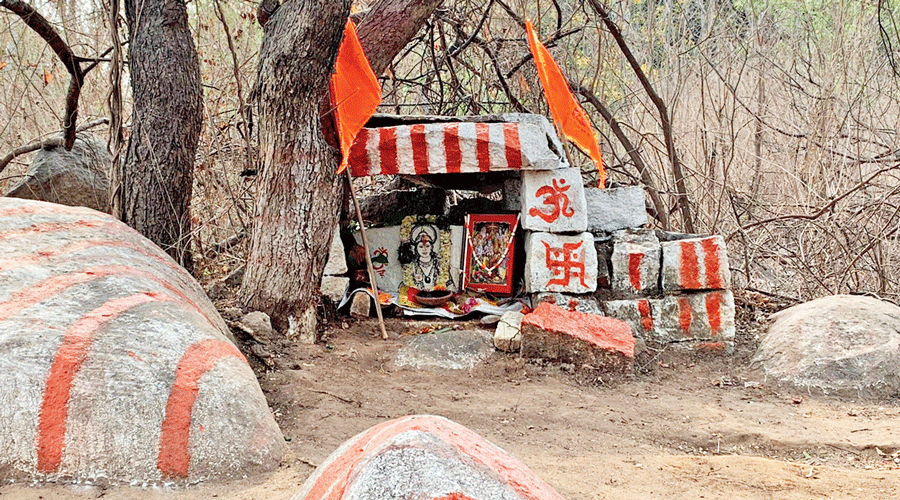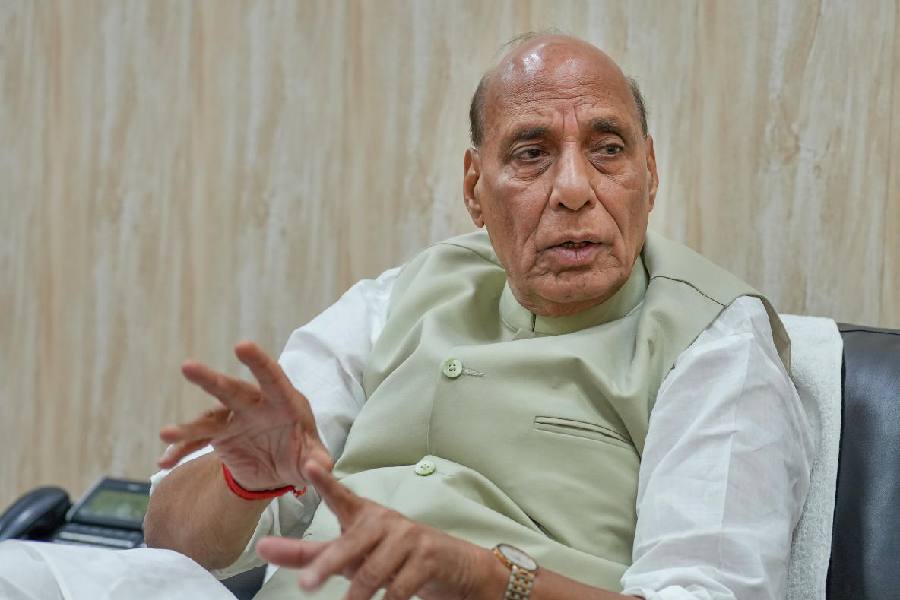A “temple” has allegedly been crystallised on the University of Hyderabad campus on Ram Navami by painting a rock structure saffron and installing flags of that colour, prompting the students’ union to allege “saffronisation” of the institution.
The administration of the university, where Dalit research scholar Rohith Vemula committed suicide in 2016 after allegedly facing caste discrimination, has set up a committee to inquire the allegations.
The university students’ union had accused the ABVP, the campus wing of the RSS, of turning the rock formation into a “temple” on Sunday.
University registrar Devesh Nigam denied that any students’ group was involved.
During Ram Navami celebrations on Sunday, it was found that a formation of rocks under a tree between the men’s hostel-F and the chief warden’s office had been painted saffron and the swastika and “Om” inscribed in saffron on them, while pictures of Lord Ram had been kept in the cavity of the structure. Saffron flags had been affixed to the top of the structure.
Students’ union secretary Gopi Swamy, associated with the Ambedkar Students’ Association, said this was an attempt to saffronise the campus.
“The campus is a democratic and secular space. Students of all religions study and celebrate their festivals here. The ABVP’s attempt to create a temple-like structure does not match the ethos of the university. So we have complained (to the varsity authorities). We demand that the university take proper action against the students,” Gopi said.
Nigam, the university registrar, said no students’ outfit was behind the installation of a temple on the campus.
“It is a small structure that has been there since the inception of the university. Photos of some Hindu deities were there too. On the day of Ram Navami, one or two students went there and cleaned the place, painted it saffron and installed saffron flags. They had not taken our permission. So a committee has been set up to inquire into the matter. Action will be taken as per its recommendations,” Nigam said.
The registrar said the university had identified the students and found out that they were not associated with any group.
“Our university has a policy not to allow any permanent religious structure on the campus. But we allow the celebration of religious festivals. That day, we had allowed a group of students to celebrate Ram Navami at Gurbaksh Singh Maidan. That celebration was peaceful,” Nigam said.
Ghazala Jamil, a teacher at Jawaharlal Nehru University (JNU), said some public institutions had shrines on their campus and religious festivals were regularly organised, but added that constructing a temple on the compound or demanding such constructions was “an act of aggression”.
“Religious worship and practices are conducted during many university rituals like openings or inaugurations. People have mostly been tolerant towards such practices. Lighting of lamps at academic events is quite common. But constructing a religious shrine or demanding such constructions in public institutions are new and meant as acts of aggression,” Jamil said.
Prof. Rajeev Kumar of JNU said: “Worshipping God is a matter of faith and practice for most students and faculty. If the university rules allow, permanent structures should be constructed. But the students need not set up makeshift structures.”











